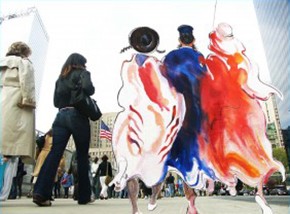Worship immersion tour: Crossing religious boundaries

Maybe Matt Kelley should have known better; he is a pastor, after all. In his United Methodist church in Nashville, fiddling with your cell phone during worship may be a little tacky, but you can get away with it if you’re discreet. Not so at Abyssinian Baptist Church in Harlem.
“I stupidly took up my phone and responded to a text message in the middle of the service, and I was promptly told to put that away because it’s disrespectful to do during a worship service,” said Kelley. “I definitely understood that I was a visitor and an ‘other,’ if you will. They helped me understand how I’m supposed to behave.”
Abyssinian was Kelley’s first stop on a tour sponsored by Faith House Manhattan, a nonprofit ministry that guides visitors through New York’s diverse religious communities during three- or four-day retreats. This religious immersion experience is an experiment for Faith House, which is led by Croatian immigrant and Seventh-day Adventist pastor Samir Selmanovic.




